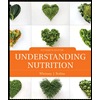
Concept explainers
To explain: The policies in the states of USA to protect high school athletes from heat illness.
Concept introduction: When the body temperature rises above 97°F (36.1°C) to 99°F (37.2°C) range, the control center for thermoregulation in the brain inducts signals. Counter current heat exchange occurs. The blood vessels near the skin will dilate and heat is released to the exterior. When the body temperature drops below a certain range, the control center for thermoregulation in the brain inducts signals. This results in body shivering and counter current heat exchange occurs. The blood vessels near the skin constrict resulting in the conservation of heat. The above processes are collectively called as counter current heat exchange. Heat illness is a condition where the brain fails to thermo-regulate over the exposure to heat.
To explain: The reason why heat illness is much more common in football players than athletes.
Concept introduction: When the body temperature rises above 97°F (36.1°C) to 99°F (37.2°C) range, the control center for thermoregulation in the brain inducts signals. Counter current heat exchange occurs. The blood vessels near the skin will dilate and heat is released to the exterior. When the body temperature drops below a certain range, the control center for thermoregulation in the brain inducts signals. This results in body shivering and counter current heat exchange occurs. The blood vessels near the skin constrict resulting in the conservation of heat. The above processes are collectively called as counter current heat exchange. Heat illness is a condition where the brain fails to thermo-regulate over the exposure to heat.
To make: Pamphlet that could be given to high school football players educating them about the dangers of heat illness and ways to prevent it.
Concept introduction: When the body temperature rises above 97°F (36.1°C) to 99°F (37.2°C) range, the control center for thermoregulation in the brain inducts signals. Counter current heat exchange occurs. The blood vessels near the skin will dilate and heat is released to the exterior. When the body temperature drops below a certain range, the control center for thermoregulation in the brain inducts signals. This results in body shivering and counter current heat exchange occurs. The blood vessels near the skin constrict resulting in the conservation of heat. The above processes are collectively called as counter current heat exchange. Heat illness is a condition where the brain fails to thermo-regulate over the exposure to heat.
Want to see the full answer?
Check out a sample textbook solution
Chapter 21 Solutions
Campbell Essential Biology with Physiology (6th Edition)
- One employee is confused by the term “determinants” and asks for clarification. You give a general definition, differentiating between downstream and upstream determinants, and provide the examples below. You ask them to identify which of the determinants below is the upstream determinant of not wearing sunscreen—the health behavior—for skin cancer prevention. They correctly select Having a family history of skin cancer Thinking there is no way you could get skin cancer Hating how sunscreen makes your skin feel Sunscreen not being available in local storesarrow_forwardWhich of the following statements about vitamin C is FALSE? Group of answer choices Good sources of vitamin C include bell peppers, citrus, and broccoli. Vitamin C is required to synthesize the structural protein collagen. Vitamin C deficiency is rare in developed countries today. There is good evidence that vitamin C supplements can prevent the common cold and dramatically shorten its duration in the general population.arrow_forward1. In your own understanding, why is it that the study of Basic Life Support is very important? (Explain in 50 words). 2. Why is it that the Insects and pests are hazards in a survival situation? (Explain in 50 words). 3. In your own understanding why is it that allergy is dangerous and can caused death? (Explain in 50 words). 4. 1. In your own understanding explain the effect of tropical weather in survival. (Not less than fifty 50 words). 5. In the Travel Tips, what is the most important and why? (Explain in not less than fifty 50 words). 6. What are the important things that are necessary during travel through jungle areas? Give at least two (2) and explain each not less than twenty (20) words.arrow_forward
- A high metabolic rate warms the animal from within, and insulation (such as fur and body fat) slows heat loss. Birds for example are warm-blooded animals that have high metabolism. During the winter, how do birds keep their body warm? The answers are found in their parts, their feathers, legs and feet, and their behavior like fluffing, shivering and roosting. How do their feathers, legs and feet help them regulate their body temperature? How do fluffing, shivering and roosting regulate bird's body temperature?arrow_forwardThe working part of the muscle is called A. Head B. Belly C. Tendon D. Aponeurosis What are the microbes called which colonize our bodies and actually help us to survive by aiding digestion or guarding against infection. pathogens normal flora vectors fomitesarrow_forwardThe Ebola virus is a zoonotic virus, which means that it can spread from animals to humans. Once a person is infected, the virus affects multiple organ systems in the body. Infected cells can attach themselves to blood vessels, causing uncontrollable internal bleeding in some patients, accompanied by high fever—a condition known as hemorrhagic fever. Other common symptoms include liver and kidney failure, vomiting, and diarrhea. On average, 50% of people that contract Ebola die from the disease, though the fatality rates of past outbreaks have varied from 25% to 90%. Scientists isolate virus RNA from blood samples and then convert the RNA to DNA. Using DNA sequencing, they then compare virus sequences isolated from individuals in different locations and at different times in an outbreak. By identifying differences in the viral genomes, scientists can reconstruct the history of how the virus spreads and mutates. Tracking mutations over time can also reveal whether the virus is…arrow_forward
- How does pathogen infection result in the occurrence of fevers in a host? Pyrogens produced by the pathogen alter the host thermostat. The interaction between PAMPs and PRPs causes a respiratory burst. The pathogens break down the host's hypothalmus. Edema caused by the pathogen raises the body temperature.arrow_forwardMiracle Mineral Solution (MMS) can cure AIDS, Ebola, cancer, and malaria. Or at least that the website tells potential customers. The inventor and chief advocate of the products is Jim Humble. There is little evidence to support the fact that MMS does anything to patients aside from making them feel worse than they did before they tried it. The U.S. Food and Drug Administration (FDA) is typical in its conclusions about the so-called miracle drug. The FDA is typical in its conclusions about the so-called miracle drug. The FDA identifies it as 28 percent sodium chlorite, which , when mixed with an acid (as recommended), produces a potent form of bleach. The product’s labels suggest high oral doses for the minimum effect. The FDA states the oral doses will produce nothing but nausea, vomiting, dehydration, and diarrhea. Humble claims to have “treated” 100,000 patients in Mexico and other parts of the world. It is also clear that MMS has been used on pancreatic and lung cancer patients…arrow_forwardWhat is the role of blood vessels to control body temperature? * Blood vessels regulate the flow of oxygen in the blood to prevent hypoxia Blood vessels supplying the skin will widen or narrow. Blood vessels will become more elastic to allow a surge of blood and oxygen to the brain. Blood vessels move through the skin to supply enough warmth. No answerarrow_forward
- What is the most likely homeostatic response to an increase in environmental temperature? A. Blood vesse! Constriction 5. B. Producing sweat C. Shivering and muscle contraction D. Goose bump formation 6. What could happen due to a failure in homeostasis? A. The accumulation of waste products B. The loss of excess water from the body C. Maintaining excess levels of sugar in the body D. All of the above are potential outcomes of failure of homeostasis. 7. Which of the following is true when the body is under homeostasis? A. The body cannot generate its own heat in very cold conditions B. The body is under dynamic equilibrium C. The body is able to self-sustain without anything from the environment D. None of the o' ve *46arrow_forwardBotox is a toxin produced by the bacterium Clostridium botulinum. When ingested with tainted food, Botox can kill by paralyzing muscles needed for breathing and heartbeat. Physicians inject small quantities of diluted Botox into facial muscles to paralyze them and reduce the appearance of wrinkles. Some people have expressed concern about a trend in which people come together for “Botox parties” at hair salons and other nonmedical settings. What are the risks of getting injections in such a setting?arrow_forwardWhich of the following statements related to Radiation Therapy is FALSE? Radiation therapy works by damaging the DNA within cancer cells and destroying their ability to reproduce. When the damaged cancer cells are destroyed by radiation, the body naturally eliminates them. ONormal cells are affected by radiation, but they are able to repair themselves. Radiation therapy is the only treatment a patient with cancer needs.arrow_forward
- Lifetime Physical Fitness & WellnessHealth & NutritionISBN:9781337677509Author:HOEGERPublisher:Cengage
 Understanding Nutrition (MindTap Course List)Health & NutritionISBN:9781337392693Author:Eleanor Noss Whitney, Sharon Rady RolfesPublisher:Cengage Learning
Understanding Nutrition (MindTap Course List)Health & NutritionISBN:9781337392693Author:Eleanor Noss Whitney, Sharon Rady RolfesPublisher:Cengage Learning  Concepts of BiologyBiologyISBN:9781938168116Author:Samantha Fowler, Rebecca Roush, James WisePublisher:OpenStax College
Concepts of BiologyBiologyISBN:9781938168116Author:Samantha Fowler, Rebecca Roush, James WisePublisher:OpenStax College Human Physiology: From Cells to Systems (MindTap ...BiologyISBN:9781285866932Author:Lauralee SherwoodPublisher:Cengage Learning
Human Physiology: From Cells to Systems (MindTap ...BiologyISBN:9781285866932Author:Lauralee SherwoodPublisher:Cengage Learning




